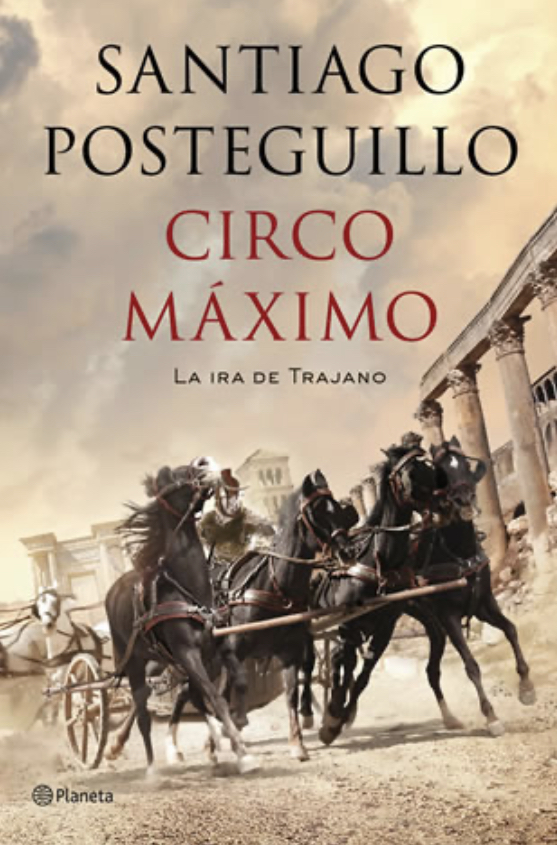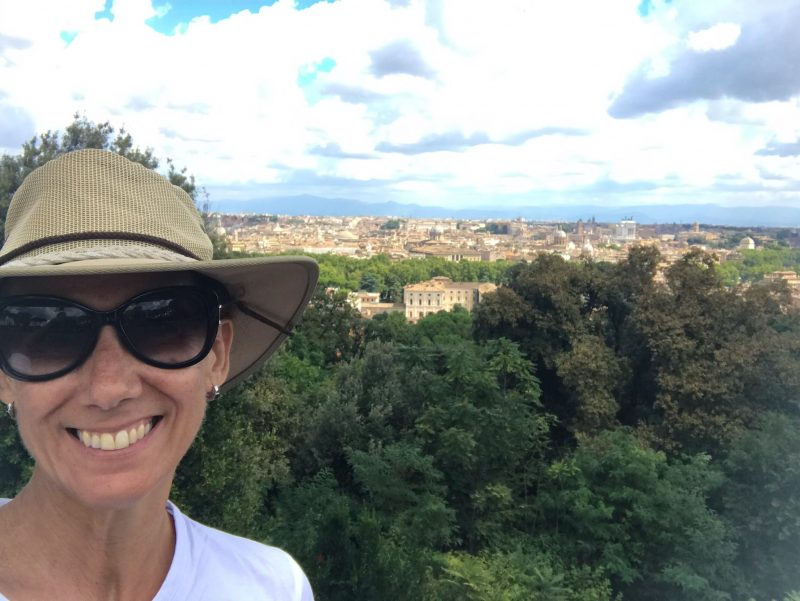
On a Sunday morning I had the brilliant idea to go to Trastevere from my place, crossing the park Villa Doria Pamphilij. It’s quite big, the temperature was mild, & I don’t mind walking.

I followed its paths & all of a sudden I found a wall or an old aqueduct, statues, fountains & I said to myself, if you were hoping to find only grass & trees it means you are not yet aware that you are in Rome.
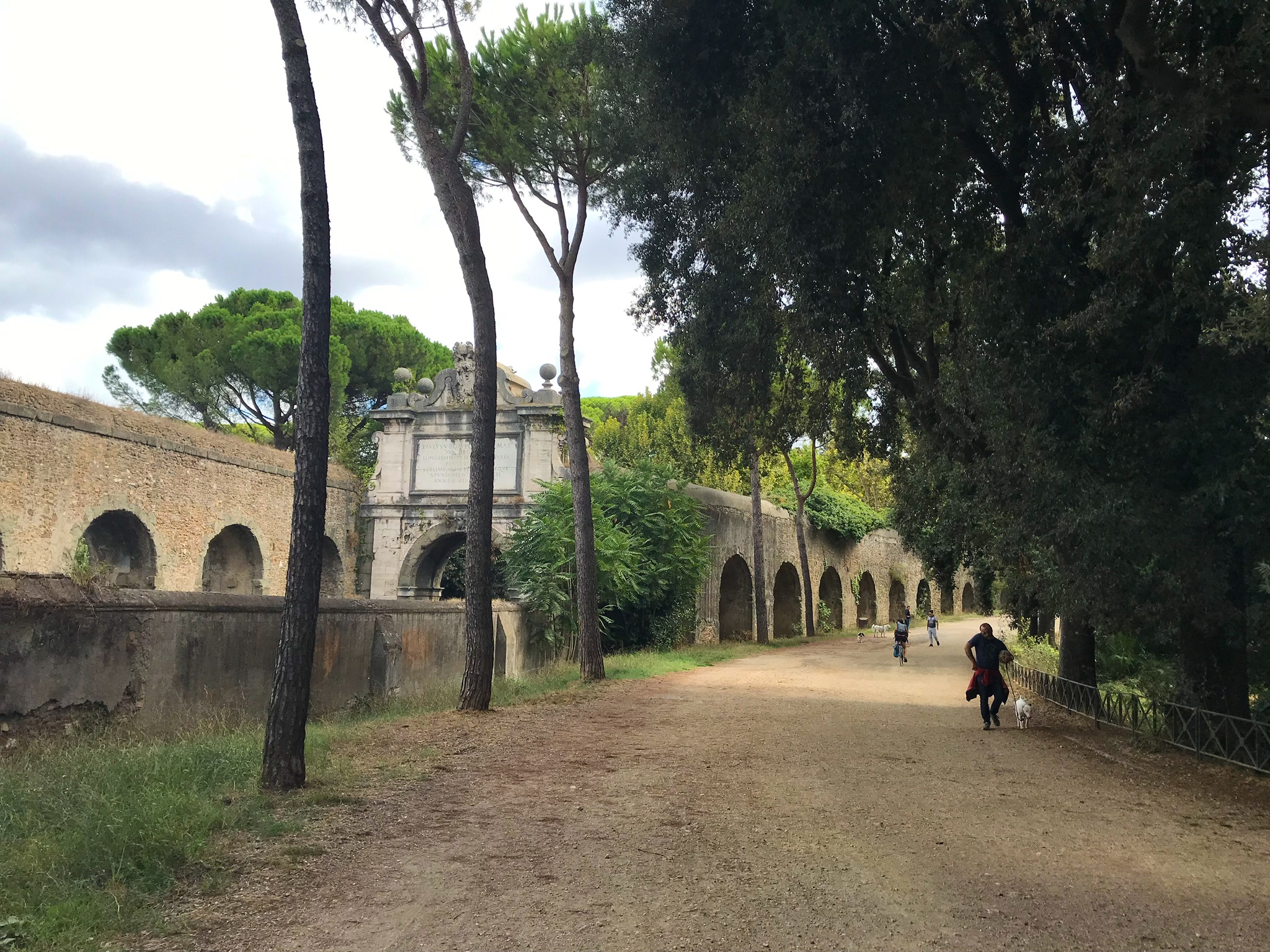
These big parks used to belong to villas of wealthy families of the Renaissance, that’s why half way through my walk I found a palace, yes, a majestic & beautiful palace that gives name to this park. Of course its very well looked after gardens could never go unnoticed.
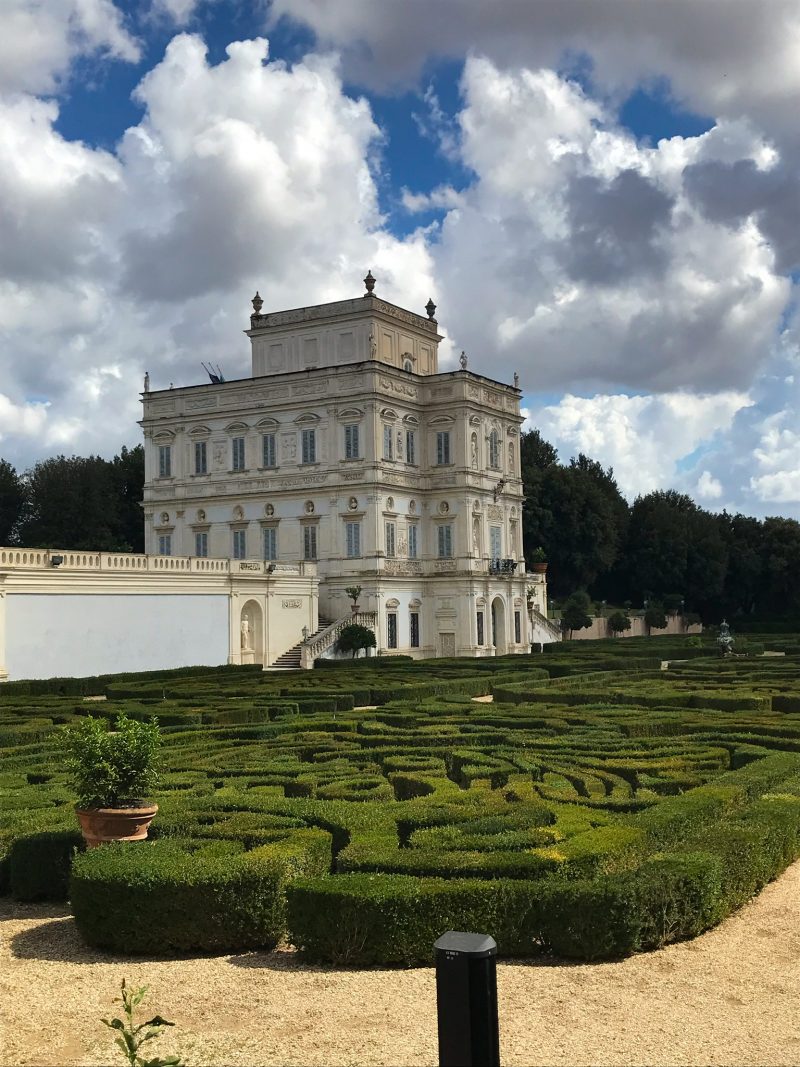
I was about to exit the park through a gate that must be the closest entrance to the Trastevere area, when I heard some organ music that must’ve come from a nearby church I couldn’t place, I found it very mystical to stroll around these beautiful gardens with that kind of background music.
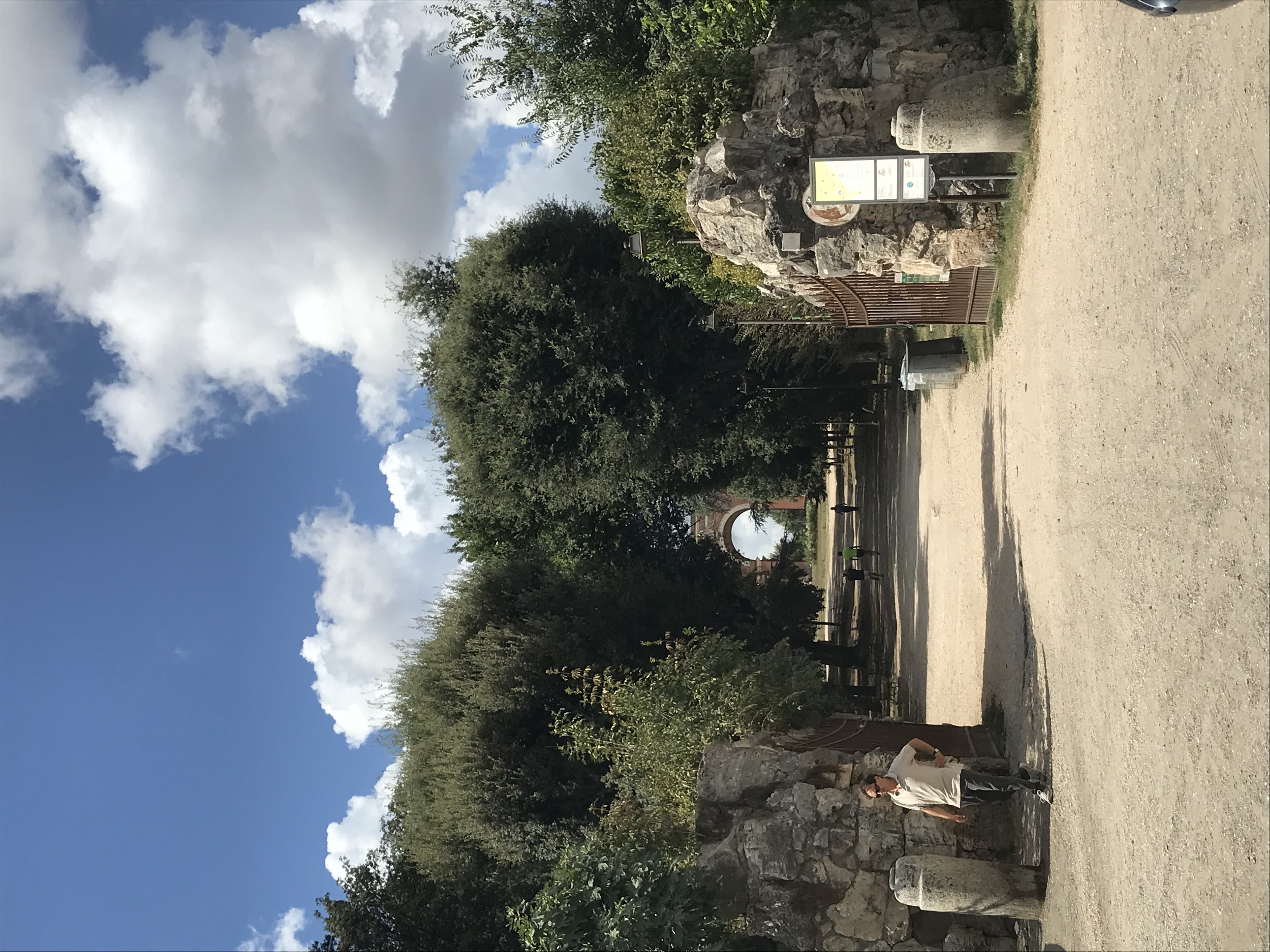
I kept walking to find the Museo della Memoria Garibaldina, a museum to remember Garibaldi, that was closed as it was Sunday.
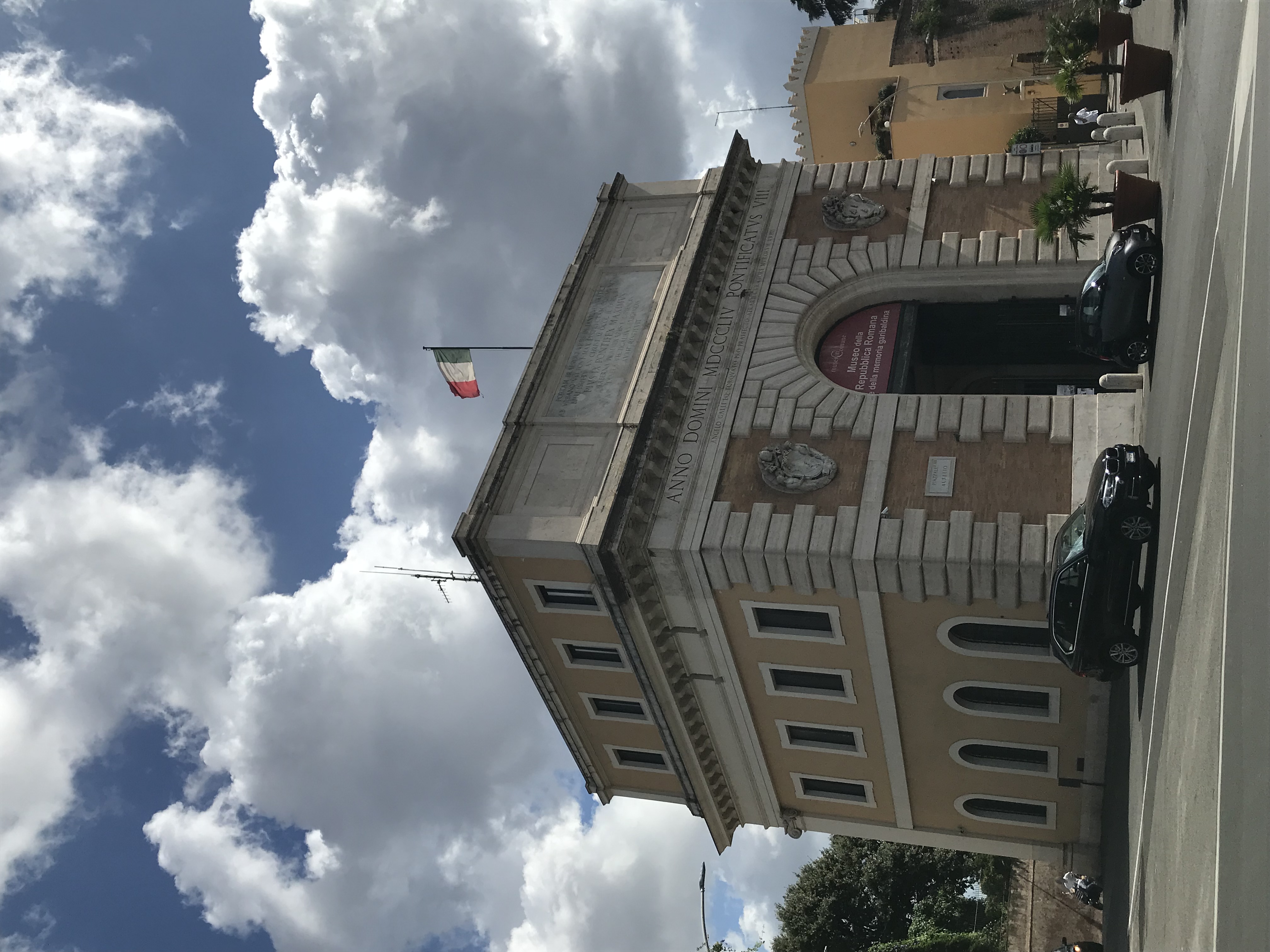
Right there, I saw a beautiful promenade surrounded by trees which I walked up hill until I reached a square with a big statue in the middle, it’s a monument to the legendary Giuseppe Garibaldi, who was the general & patriot who unified Italy. The statue also gives name to the piazza.
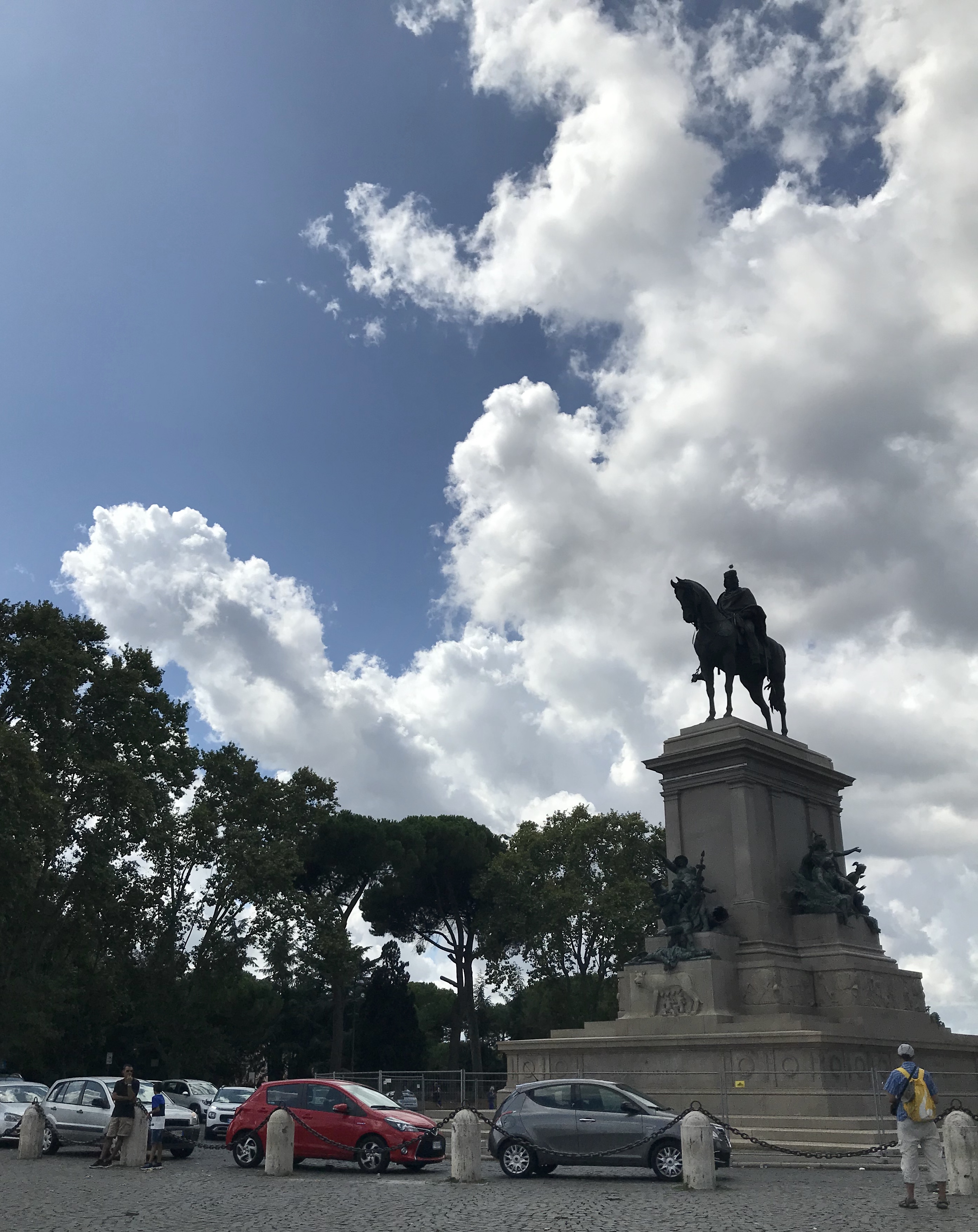
This hill is called of Gianicolo (Janiculum) & it is considered the eighth hill of Rome From there we can enjoy beautiful views of Rome, another wonderful Roman lookout.
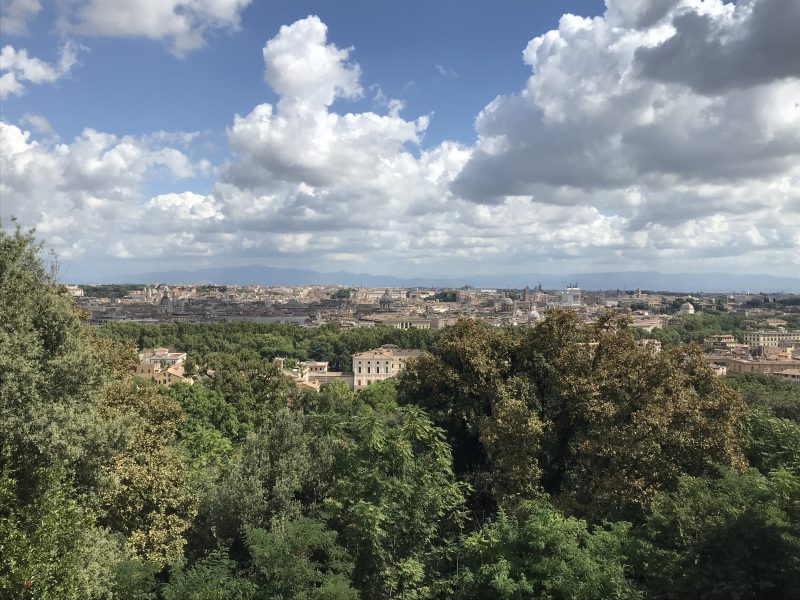
The place is ideal to spend some time chilling or meeting friends. This Sunday there was a gathering of vintage car lovers, they were all parked together so we could enjoy them, I loved it.
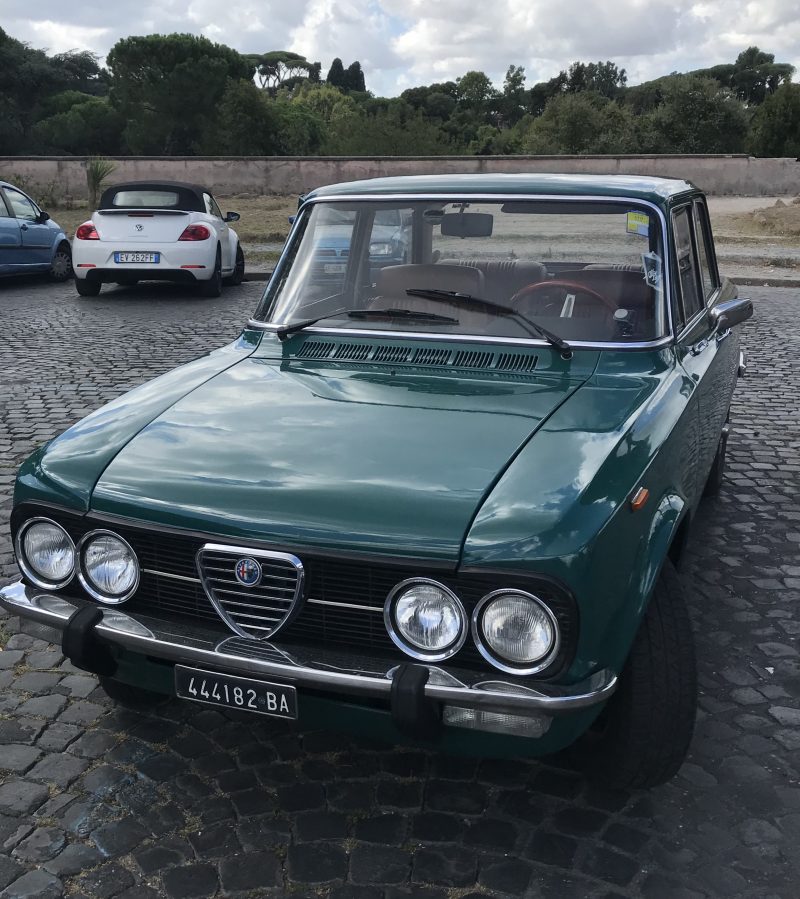
You can reach Gianicolo directly from Trastevere, there’s no need to do the long walk through the park, there’s a flight of steps that take you directly to the hill. After going up (or before going down for me that day) & walking a few meters to the left you’ll see the Cervantes Institute of Spanish Language, an institution that takes Spanish all over the world. In front of it beautiful views of Rome unfold, I thought to myself, they know how to choose a location.
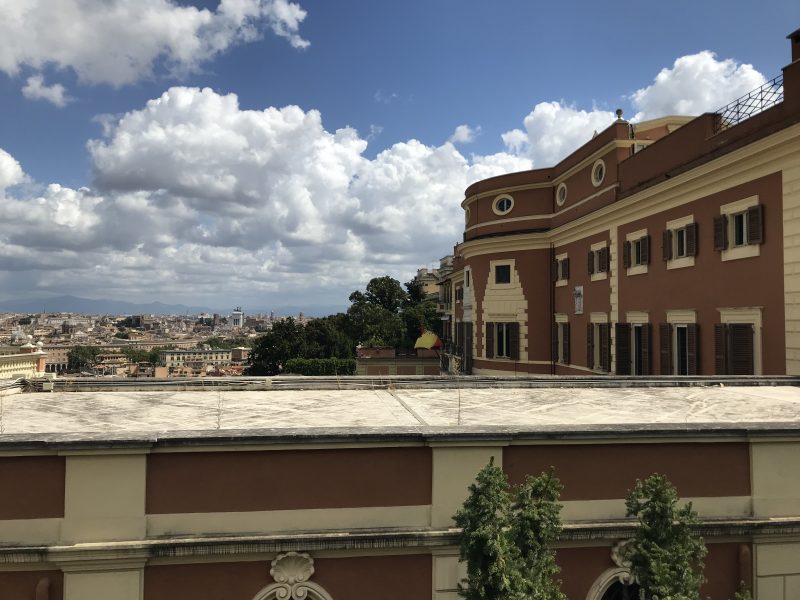
On the opposite side of the Institute there’s the Fontana dell’Acqua Paola, before called Acqua Trajana. It was an aqueduct from the Ist Century built by the emperor Trajan, the protagonist of the book I mentioned on my last post. Some people call it the “other Trevi”. It was a shame that it was under repairs & I couldn’t see it in its full splendour, but I’ll get to it.
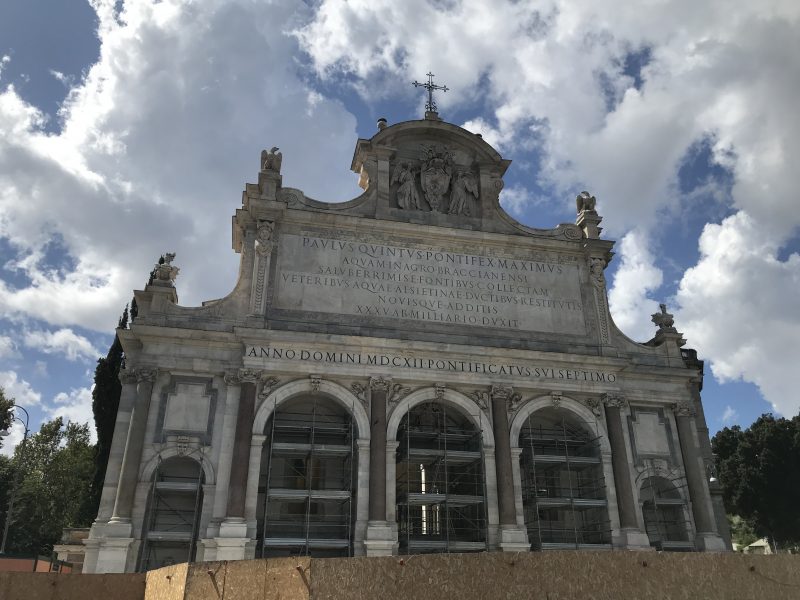
After the fontana I made my way to the little narrow streets of the picturesque neighbourhood of Trastevere.
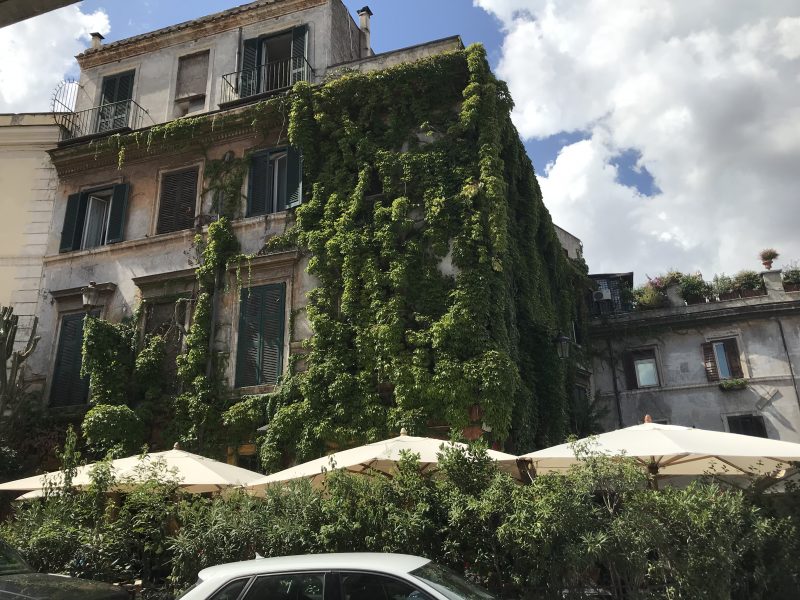
As I told you on my first post, it’s full of restaurants & trattorias, some of them very popular & with long queues. Of course, being Sunday & still summer it’s understandable.
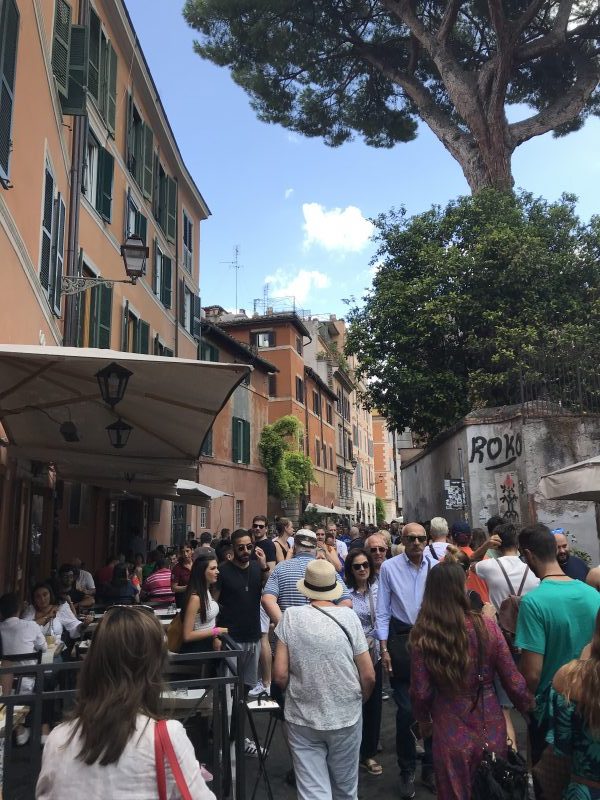
I didn’t stop to eat, I continued to the main square, where the church of Santa Maria in Trastevere stands, it also gives name to the piazza & it’s a key spot of the area.

Being Rome the birthplace of Christianity the oldest churches in the world are found here, the Basilica of Santa Maria in Trastevere is one of them.
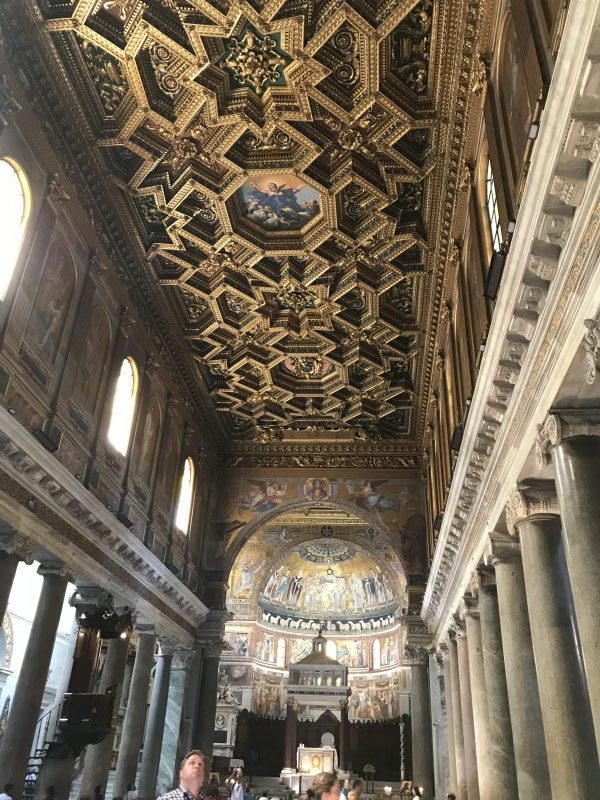
It’s believed to be the first church dedicated to the Virgin &, like all other churches in Rome, you need to wear discrete clothing when visiting.
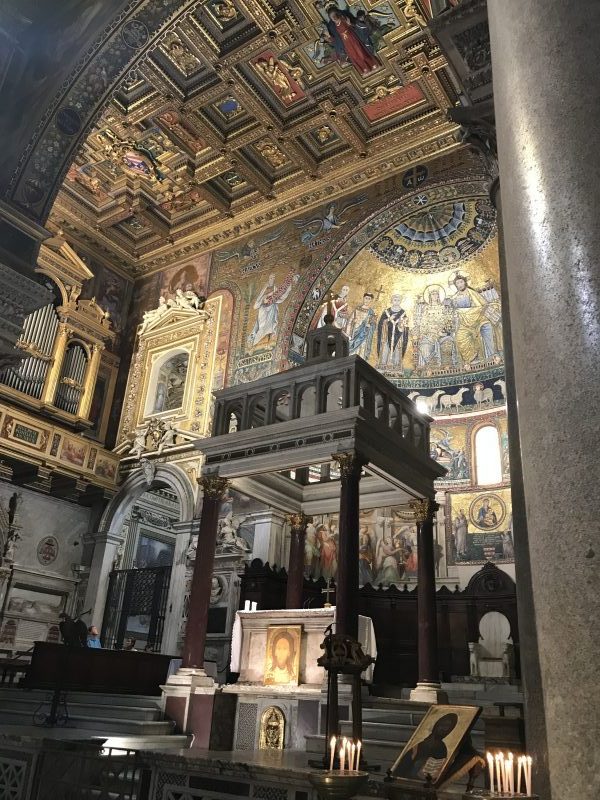
From there I went to see another church, the Basilica of Santa Cecilia, my friend Marco’s favourite one, no photos were sent to him as it was closed, both times I went. Remember that many churches close at midday for a couple of hours, so take it into account if you planing to visit one along the way. Another thing for me still to do in Rome.

I must say that being in Trastevere the best idea is to go for something to eat & then come back, don’t you think?

This charming neighbourhood is located on one side of the river Tiber, where I suggest you visit it from. Opposite it there’s the Isola Tiberina, an island in the river with the dome of the synagogue right behind it.
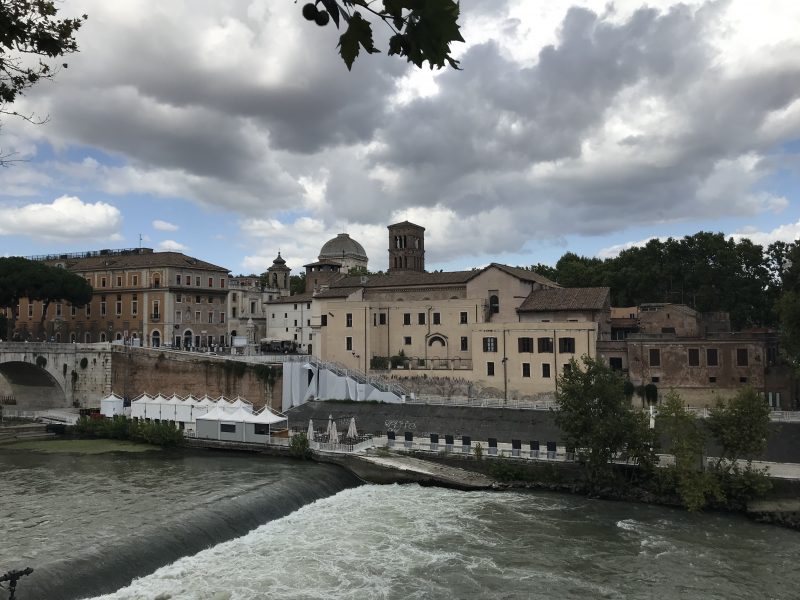
Walking along the river towards the Vatican we can stand on the bridge Ponte Garibaldi from where we’ll have a beautiful view of the Ponte Sisto & the Vatican dome making this postcard picture even more pretty.
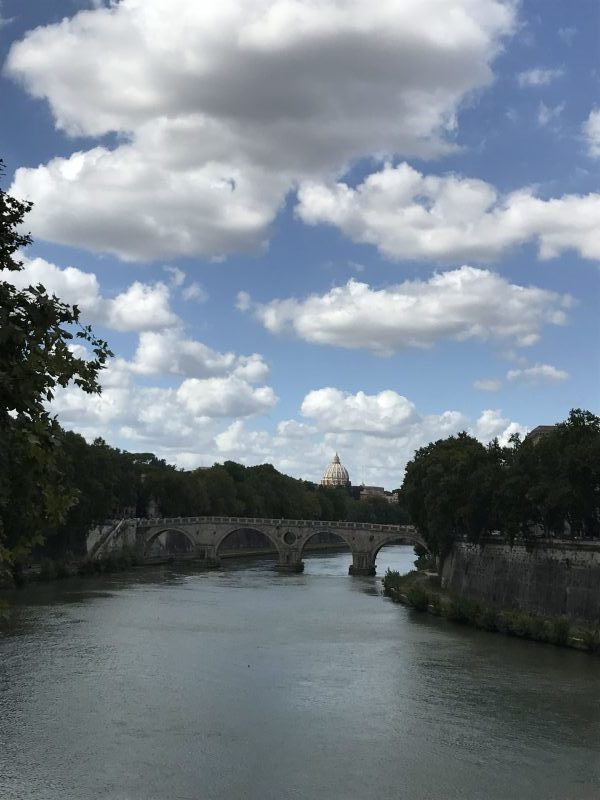
Turning the river’s bend the Castello di Sant’Angelo will appear, fortress & refuge of popes.
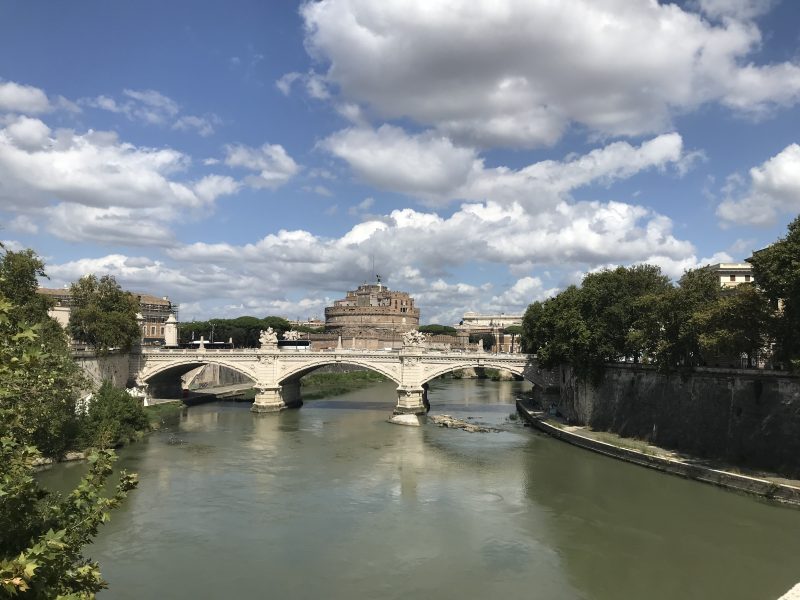
The castle is our last stop today & the place where we will continue from on our next post, as now it’s time I tell you about a new book, & of course, It’s no other than the Trajan Trilogy, about the emperor that has left a great footprint in the streets of Rome, & its second book called “Circo Massimo” by Santiago Posteguillo. In this historic novel Trajan is already emperor of Rome & we’ll learn how his rule was. In his effort to expand the territories of the empire he will lead two Dacian wars, that will mark the rhythm of this novel intertwined with love, friendship & family secrets. We’ll witness a Vespa put on trial that, will lead us to the world of the chariot races celebrated in the Circus Massimus, plotting & conspiracies, all of that narrated in a very clear & addictive manner the author has us accustomed, our path through Roman history, I can assure you, will be entertaining & revealing.
